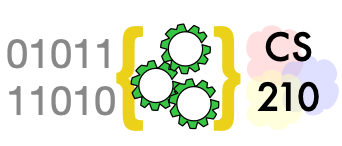Treemap Visualization of Recursive Data#
The project accompanying this chapter asks you to create a visual representation of recursive data.
Initially you will recursively divide a flat (that is, not nested) list of integers into groups represented by rectangular areas.
Next you will recursively divide a nested list of integers into groups represented by rectangular areas, preserving the grouping in each nested list.
Finally, you will process a structure of nested dictionaries to visualize grouping of elements of different sizes.
In the final version, you will be able to process a JSON structure like this summary of files used to build this chapter:
{
"08-01-Recursive-Data.md": 9503,
"08-02-Nested-Dicts.md": 5310,
"08-03-Treemap-Project.md": 971,
"Chap08.json": 0,
"Samples": {
"dir_tree.py": 2042,
"dir_tree_printer.py": 1217
},
"img": {
"chap08.svg": 2763,
"directory-tree-horizontal.png": 43381,
"directory-tree-vertical.png": 30142
}
}
This JSON file was produced by Samples/dir_tree.py. When processed by a sample solution to our treemap project, we can obtain a visualization showing the relative sizes of files:
Treemaps are not effective visualizations for all kinds of
quantitative data (e.g., it is not easy to determine the relative
sizes of the two .png files), but they can provide a good
at-a-glance comparison, especially for hierarchically structured data.
For example, we can quickly see that the
bitmap graphics files (.png) are much larger than the source text
files (.md), but the scalable vector graphic (.svg) image is
relatively compact. Management of file space was among the original
applications of the treemap visualization format, and has been used
in commercial and open source applications like
Disk Inventory X
for MacOS,
WinDirStat
for Windows, and
QDirStat
for Linux.

